
Wine Culture and Information since 2002 - Volume 22
 Wine Culture and Information since 2002 - Volume 22 |
|
Comparing Pinot Noir and Nerello MascaleseTwo grapes having truly different geographic origins - the former is from Burgundy, the latter is from Sicily - both make wines of indisputable elegance, in which can be appreciated common qualities |
|
Pinot Noir is a grape which does not need to be introduced. Known everywhere in the world for the elegance of its red wines, as well as for the many sparkling wines produced with it, Pinot Noir is one of the most important emblems of French enology. In particular, its red wines have always been considered as an example of elegance and class, not only for the excellent aromatic qualities which can be appreciated from the glass, but also for that crisp character making it so unique. Each grape is different from any other, each territory has absolutely unique qualities and unrepeatable everywhere, nevertheless in Sicily, more precisely in the area of the volcano Etna, there is a grape, present in this territory since many centuries, making wines of indisputable elegance and class, with a crisp personality which can recall, for certain aspects, Pinot Noir: Nerello Mascalese. Of course, they are two distinct varieties and that, according to a genetic point of view, have no characteristic in common: autochthonous from Burgundy the Pinot Noir, autochthonous from Etna the Nerello Mascalese.
|
|
Important celebrity of Burgundy, together with Chardonnay, Pinot Noir is the protagonist of the excellent red wines of the area, characterized by a rare finesse and elegance, both in aromas and flavors. A grape not so easy to cultivate and to vinify, Pinot Noir is a pretty demanding variety both in environmental and wine making terms. A variety requiring cool climates in order to offer its best, Pinot Noir does not love compromises in case you want to get the best out of it, neither in vineyard nor in the winery. Pinot Noir, thanks to its evident acidity, it is a variety allowing many wine making interpretations, from red wines to white wines, last but not the least, excellent sparkling wines, of which Champagne is the most renowned representative. Its red wines are characterized by a not very intense color and a moderate transparency - because of the modest content in polyphenols and coloring substances - a quality meaning for many mediocre wine, accustomed as they are to recognize quality only in wines with deep colors and impenetrable transparency.
Red wines produced with Pinot Noir are generally characterized by an evident crispness, given by acidity, and by a pretty moderate astringency, sometimes accentuated by the effect of fermentation and aging in cask. Also for these reasons, not all appreciate red wines produced with Pinot Noir: whereas for many it is the highest representation of elegance in a wine, for others it is absolutely indifferent. Pinot Noir is among the most ancient varieties of France - both Columella and Pliny the Elder mentioned this grape in their books - and it is believed the grape is present in Burgundy for more than 2000 years. Pinot Noir is considered to be “genetically unstable” and has the capacity of easily change therefore giving origin to other varieties. It is in fact believed from this grape have been originated more than one thousand different clones, of which the most famous ones are Pinot Gris, Pinot Blanc and Pinot Meunier. From Burgundy, Pinot Noir spread everywhere in the world, including Italy and in particular in cool areas, however the best wines produced with this grape are from its homeland.
|
||||||||
|
Nerello Mascalese can be defined as the grape of the volcano, more precisely, of volcano Etna. A variety originating from the eastern territory of Sicily, Nerello Mascalese has been mentioned in writings since 250 years ago. Its notoriety is limited inside the territory of Etna, however in recent years, many Sicilian wineries have been involved in the production of quality wines with Nerello Mascalese, therefore allowing the grape to be known outside the borders of the island. The name of this variety derives from Mascali, a town in province of Catania, an area where this grape has always been cultivated and common. Today Nerello Mascalese is cultivated in most of Sicily, however the best expressions of the grape are found in the area surrounding the volcano Etna, in particular in the territories of the provinces of Catania and Messina. According to local viticultural tradition, Nerello Mascalese is cultivated with the alberello technique in the slopes of volcano Etna. Nerello Mascalese is a late ripening variety and it is usually harvested around the half of October, a quite unusual month for Sicilian viticulture where harvesting is frequently done even in August. Wines produced with Nerello Mascalese are strongly affected, more than other varieties, of the type of soil in which it is cultivated as well as the exposition of vineyard, therefore making from pretty “modest” wines to wines of absolute elegance and class. Last but not the least, quality Nerello Mascalese requires a hard work of selection in vineyard, while trying to keep the yields per vine very low, a result which can be obtained with the “alberello” cultural system. Wines produced with this grape are characterized by a pleasing crispness - this grape is in fact used for the production of sparkling wines - as well as a pretty high volume of alcohol, qualities allowing long times of aging in bottle. Once Nerello Mascalese was mainly vinified with other local varieties, today, thanks to its revaluation, there are many producers who prefer making mono varietal wines by using this interesting Sicilian grape.
|
||||
|
Two varieties having distant and different origins, two wines that in the glass have common qualities, while offering an interesting sensorial experience. None of the wines has a strong astringent character - in both cases we have a moderate astringency - however in both can be perceived a pleasing acidity and an aromatic profile in which fruits and flowers are protagonists. The first wine of our comparative tasting is Tenuta Valdipiatta's Pinot Noir, produced in Tuscany near Montepulciano and aged for 12 months in barrique and followed by 6 months of aging in bottle. The second wine of the tasting is Duca di Salaparuta's Vajasindi Lavico, produced with 100% Nerello Mascalese, harvested in vineyards located in the area of Etna, also in this case aged for 12 months in barrique to which follow 6 months of aging in bottle. The wines are selected according to the most recent vintages commercialized by respective producers and served at the temperature of 18° C (65° F) and poured in two ISO tasting glasses.
|
|
Pinot Noir and Nerello Mascalese are pretty similar when observed in a glass. Intense and brilliant colors, bright ruby red hues, with pretty moderate transparency. Both wines tend to show pale nuances to the edge of the glass, with colors frequently tending to garnet red as well as brick red. This characteristic could discourage some tasters, as - sadly to say - many consider a great wine only in case it shows deep and intense colors, as well as a pretty low transparency, almost impenetrable to light. This is in fact the characteristic of wines produced with grapes rich in polyphenols and extracts, but as appearance is not everything, fortunately, great wines are not only the ones being inscrutable to the glass. Neither Pinot Noir nor Nerello Mascalese have high quantity of coloring substances - such as, for example, in the case of Merlot or Cabernet Sauvignon - therefore in their wines transparency will always be pretty moderate and the contrary would be quite unusual. The first wine of which we will examine appearance is Tenuta Valdipiatta's Pinot Noir. By holding the glass tilted over a white surface, indispensable in order to correctly do the analysis of color and transparency, let's observe the base of the glass. It will be observed an intense and brilliant ruby red color, with a moderate transparency: by putting an object between the glass and the white surface it will be in fact possible to see its details. Nuances in this wine, observed at the edge of the glass, towards the opening, are characterized by a garnet red color. Let's now pass to the examination of Duca di Salaparuta's Vajasindi Lavico. Also in this case it can be observed an intense ruby red color, as well as a moderate transparency. This wine will however show a deeper color than Pinot Noir. Nuances in this Nerello Mascalese are characterized by a garnet red hue tending to brick orange.
|
|
Elegance and class, triumph of fruits and flowers, with that right complexity which does not excessively disturb the organoleptic qualities of the wine. Also at the nose, Pinot Noir and Nerello Mascalese express similar qualities, an olfactory profile united by many common points. Both wines express in fact - in their main aromas - sensations of cherry, raspberry and strawberry, as well as plum, rose and violet. These qualities are pretty exuberant in both wines and also the choice of fermentation and aging containers is done in order to keep these qualities. Both Pinot Noir and Nerello Mascalese are aged in cask made of lightly toasted wood, in order to not excessively cover fruit and flower aromas of the grapes, enough to give a better roundness and complexity to their olfactory profiles. Aging these grapes in very toasted wood would in fact mean to cover their characteristic aromas, by completely corrupting the nature of the wine. Let's start the olfactory evaluation from Tenuta Valdipiatta's Pinot Noir. By holding the glass in vertical position and without swirling, we will proceed with the evaluation of opening aromas, that is the aromatic characteristics made by “light” substances and which does not need high quantity of oxygen in order to volatilize. From the glass will be perceived intense and pleasing aromas of cherry, plum and raspberry. Let's now proceed with the swirling of the glass, in order to allow the volatilization of other aromas. The aromatic sequence is completed by cyclamen and dog rose, as well as more complex sensations of vanilla, tobacco, pink pepper, cocoa and menthol. Let's now pass to the evaluation of Duca di Salaparuta's Vajasindi Lavico. The opening of this second wine is expressed by cherry, raspberry and plum, with an interesting similarity to the previous wine. After having swirled the glass, the olfactory profile of this Nerello Mascalese is completed by strawberry, rose, tamarind and cyclamen, to which are added the complex aromas of vanilla, pink pepper and carob.
|
|
The ones who usually look for wines with the power of robust tannins, will certainly be disappointed by the wines protagonists of our comparative tasting. The ones looking for elegance, the chasing of opposed sensations which are however perfectly balanced, by leaving in the mouth pleasing sensations of fresh fruits, will certainly be satisfied by these two wines. There are two characteristics in common in these wines: crispness given by a pleasing acidity and the moderate astringency of tannins. These two qualities are generally balanced by the aging in wood - the choice, like we said, is typically for lightly toasted wood - in order to give more roundness and, at the same time, a higher structure and fuller body. Both grapes make wines with a pretty high alcohol volume and it is not rare to find cases in which it is more than 13.5%. The first wine of which we will do gustatory examination is Tenuta Valdipiatta's Pinot Noir. The attack of this wine, that is the sensations perceived at the first sip, allows the understanding the Pinot Noir's character: a pleasing crispness given by acidity, moderate astringency, good roundness given by wood, with flavors directly recalling the aromas of fruits perceived to the nose. It should be noticed how roundness and alcohol contribute to balance both crispness and moderate astringency of wine. Let's now pass to Duca di Salaparuta's Vajasindi Lavico. Also the attack of this wine is characterized by a pleasing crispness and a moderate astringency - however higher than Pinot Noir - and also in this case, roundness given by wood and alcohol, contribute to the good balanced of wine. The finish of both wine is clearly persistent, leaving in the mouth a pleasing sensation of fruits, in particular cherry, raspberry and plum.
|
Wines of the Month |
|
|
|
Score legend Prices are to be considered as indicative. Prices may vary according to the country or the shop where wines are bought |
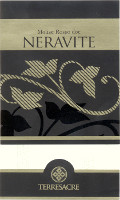
|
|
Molise Rosso Neravite 2008 |
|
| Terresacre (Molise, Italy) | |
| Grapes: Montepulciano | |
| Price: € 4.20 | Score: |
| Molise Rosso Neravite shows an intense ruby red color and nuances of ruby red, little transparency. The nose denotes intense, clean and pleasing aromas which start with hints of black cherry, blackberry and plum followed by aromas of blueberry, violet and cyclamen. The mouth has good correspondence to the nose, a tannic attack and however balanced by alcohol, good body, intense flavors. The finish is persistent with flavors of black cherry, blackberry and plum. Molise Rosso Neravite ages in steel tanks. | |
| Food Match: Pasta with meat, Broiled meat, Stewed meat | |
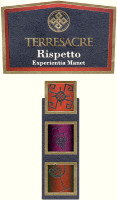
|
|
Molise Rosso Rispetto 2007 |
|
| Terresacre (Molise, Italy) | |
| Grapes: Montepulciano | |
| Price: € 10.50 | Score: |
| Molise Rosso Rispetto shows a brilliant ruby red color and nuances of ruby red, little transparency. The nose denotes intense, clean, pleasing and refined aromas which start with hints of plum, blackberry and black cherry followed by aromas of violet, vanilla, mace, chocolate and menthol. The mouth has good correspondence to the nose, a tannic attack and however balanced by alcohol, good body, intense flavors, pleasing roundness. The finish is persistent with flavors of plum, blackberry and black cherry. Molise Rosso Rispetto ages in barrique. | |
| Food Match: Stuffed pasta, Broiled meat and barbecue, Stewed meat with mushrooms, Hard cheese | |
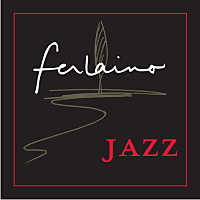
|
|
Jazz 2007 |
|
| Ferlaino (Tuscany, Italy) | |
| Grapes: Merlot (54%), Sangiovese (28%), Cabernet Franc (9%), Petit Verdot (9%) | |
| Price: € 33.00 | Score: |
| Jazz shows an intense ruby red color and nuances of garnet red, little transparency. The nose denotes intense, clean, pleasing and refined aromas which start with hints of black currant, black cherry and plum followed by aromas of violet, tobacco, vanilla, cocoa, eucalyptus, mace and hints of bell pepper. The mouth has good correspondence to the nose, a tannic attack and however balanced by alcohol, good body, intense flavors, pleasing roundness. The finish is persistent with flavors of black currant, black cherry and plum. Jazz ages for 18 months in barrique followed by at least 6 months of aging in bottle. | |
| Food Match: Roasted meat, Stewed and braised meat, Hard cheese | |
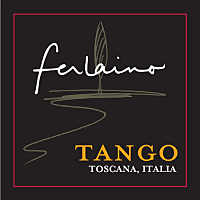
|
|
Tango 2007 |
|
| Ferlaino (Tuscany, Italy) | |
| Grapes: Merlot (66%), Petit Verdot (22%), Cabernet Franc (12%) | |
| Price: € 36.00 | Score: |
| Tango shows an intense ruby red color and nuances of garnet red, little transparency. The nose reveals intense, clean, pleasing and refined aromas that start with hints of black currant, black cherry and plum followed by aromas of blueberry, violet, vanilla, chocolate, eucalyptus, black pepper and hints of bell pepper. The mouth has good correspondence to the nose, a tannic attack and however balanced by alcohol, good body, intense flavors, pleasing roundness. The finish is persistent with flavors of black currant, plum and black cherry. Tango ages for 18 months in barrique followed by at least 6 months of aging in bottle. | |
| Food Match: Roasted meat, Stewed and braised meat, Hard cheese | |
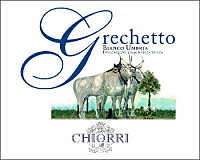
|
|
Grechetto 2009 |
|
| Chiorri (Umbria, Italy) | |
| Grapes: Grechetto | |
| Price: € 9.00 | Score: |
| This Grechetto shows a pale straw yellow color and nuances of greenish yellow, very transparent. The nose denotes intense, clean and pleasing aromas which start with hints of apple, plum and hazelnut followed by aromas of hawthorn, pear, broom and pineapple. The mouth has good correspondence to the nose, a crisp attack and however balanced by alcohol, good body, intense flavors, pleasing roundness. The finish is persistent with flavors of apple, plum and hazelnut. This Grechetto ages in steel tanks. | |
| Food Match: Pasta with meat, Mushroom soups, Stuffed pasta, Sauteed meat, Broiled fish | |
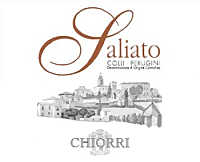
|
|
Colli Perugini Rosso Saliato 2007 |
|
| Chiorri (Umbria, Italy) | |
| Grapes: Sangiovese (50%), Merlot (30%), Cabernet Sauvignon (20%) | |
| Price: € 8.00 | Score: |
| Colli Perugini Rosso Saliato shows an intense ruby red color and nuances of garnet red, moderate transparency. The nose denotes intense, clean, pleasing and refined aromas which start with hints of black cherry, plum and violet followed by aromas of blueberry, black currant, chocolate, tobacco and vanilla. The mouth has good correspondence to the nose, a tannic attack and however balanced by alcohol, good body, intense flavors. The finish is persistent with flavors of black cherry, plum and black currant. Colli Perugini Rosso Saliato ages for at least 12 months in barrique. | |
| Food Match: Roasted meat, Braised and stewed meat, Hard cheese | |
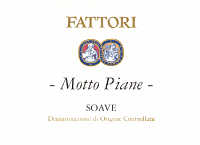
|
|
Soave Motto Piane 2009 |
|
| Fattori (Veneto, Italy) | |
| Grapes: Garganega | |
| Price: € 20.00 | Score: |
| Soave Motto Piane shows an intense straw yellow color and nuances of straw yellow, very transparent. The nose reveals intense, clean, pleasing and refined aromas which start with hints of apple, pear and peach followed by aromas of hawthorn, broom, almond, plum, medlar, pineapple and honey. The mouth has good correspondence to the nose, a crisp attack and however balanced by alcohol, good body, intense flavors, pleasing roundness. The finish is persistent with flavors of apple, peach and almond. A part of Soave Motto Piane ferments and ages in cask. | |
| Food Match: Pasta and risotto with vegetables and crustaceans, Mushroom soups, Sauteed white meat, Sauteed fish | |
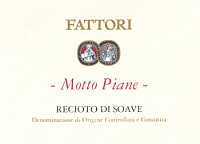
|
|
Recioto di Soave Motto Piane 2008 |
|
| Fattori (Veneto, Italy) | |
| Grapes: Garganega | |
| Price: € 25.00 - 50cl | Score: |
| Recioto di Soave Motto Piane shows a brilliant amber yellow color and nuances of golden yellow, transparent. The nose reveals intense, clean, pleasing, refined and elegant aromas that start with hints of raisin, dried apricot and almond followed by aromas of peach jam, quince jam, candied fruits, date, honey, citrus fruits peel, dried fig and nail polish. The mouth has good correspondence to the nose, a sweet and round attack, however balanced by alcohol, good body, intense flavors, pleasing crispness. The finish is persistent with flavors of raisin, dried apricot and almond. A part of Recioto di Soave Motto Piane ferments and ages in cask for 12 months. | |
| Food Match: Fruit and cream tarts, Hard cheese | |
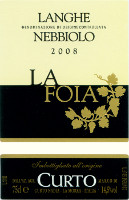
|
|
Langhe Nebbiolo 2008 |
|
| Curto (Piedmont, Italy) | |
| Grapes: Nebbiolo | |
| Price: € 14.00 | Score: |
| This Langhe Nebbiolo shows a brilliant ruby red color and nuances of garnet red, moderate transparency. The nose denotes intense, clean, pleasing and refined aromas that start with hints of cherry, plum and raspberry followed by aromas of violet, rose, vanilla, pink pepper and menthol. The mouth has good correspondence to the nose, a tannic attack and however balanced by alcohol, good body, intense flavors, pleasing crispness. The finish is persistent with flavors of cherry, plum and raspberry. This Langhe Nebbiolo ages for one year in steel tanks and for one year in cask. | |
| Food Match: Stuffed pasta, Broiled meat, Stewed meat with mushrooms | |
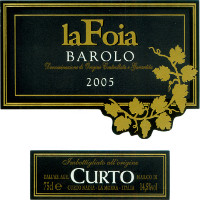
|
|
Barolo La Foia 2005 |
|
| Curto (Piedmont, Italy) | |
| Grapes: Nebbiolo | |
| Price: € 27.00 | Score: |
| Barolo La Foia shows a brilliant ruby red color and nuances of garnet red, moderate transparency. The nose denotes intense, clean, pleasing and refined aromas which start with hints of cherry, raspberry and violet followed by aromas of strawberry, plum, rose, vanilla, cinnamon, chocolate, tobacco and pink pepper. The mouth has good correspondence to the nose, a tannic attack and however balanced by alcohol, full body, intense flavors, pleasing crispness. The finish is persistent with flavors of cherry, raspberry and plum. Barolo La Foia ages for 4 years of which at least 2 in cask. | |
| Food Match: Roasted meat, Stewed and braised meat with mushrooms, Hard cheese | |
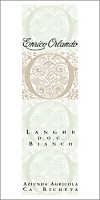
|
|
Langhe Bianco 2008 |
|
| Ca' Richeta (Piedmont, Italy) | |
| Grapes: Chardonnay | |
| Price: € 12.00 | Score: |
| This Langhe Bianco shows a brilliant golden yellow color and nuances of straw yellow, very transparent. The nose denotes intense, clean, pleasing and refined aromas which start with hints of banana, apple and plum followed by aromas of vanilla, grapefruit, hawthorn, peach, praline, hazelnut and lavender. The mouth has good correspondence to the nose, a crisp attack and however balanced by alcohol, good body, intense flavors, pleasing roundness. The finish is persistent with flavors of banana, plum and apple. This Langhe Bianco ages in cask for 12 months. | |
| Food Match: Stuffed pasta, Roasted white meat, Roasted fish, Mushroom soups | |
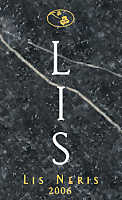
|
|
Lis 2006 |
|
| Lis Neris (Friuli Venezia Giulia, Italy) | |
| Grapes: Pinot Grigio, Chardonnay, Sauvignon Blanc | |
| Price: € 25.70 | Score: |
| Lis shows an intense straw yellow color and nuances of straw yellow, very transparent. The nose reveals intense, clean, pleasing and refined aromas that start with hints of apple, plum and banana followed by aromas of hawthorn, nettle, mineral, peach, praline, bell pepper and vanilla. The mouth has good correspondence to the nose, a crisp attack and however balanced by alcohol, good body, intense flavors, pleasing roundness. The finish is persistent with flavors of banana, apple and plum. Lis ferments and ages in cask for 11 months and ages in bottle for 12 months. | |
| Food Match: Roasted fish, Pasta and risotto with fish, Fish soups, Stuffed pasta | |
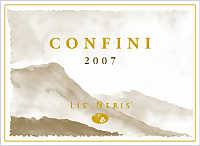
|
|
Confini 2007 |
|
| Lis Neris (Friuli Venezia Giulia, Italy) | |
| Grapes: Gewürztraminer, Pinot Grigio, Riesling | |
| Price: € 25.70 | Score: |
| Confini shows a brilliant golden yellow color and nuances of golden yellow, very transparent. The nose denotes intense, clean, pleasing, refined and elegant aromas which start with hints of grape, peach and pineapple followed by aromas of lychee, apple, pear, apricot, white rose, sage and rosemary. The mouth has good correspondence to the nose, a crisp attack and however balanced by alcohol, good body, intense flavors, pleasing roundness. The finish is persistent with flavors of grape, peach and pineapple. Confini ferments and ages in cask for 11 months followed by 7 months of aging in bottle. | |
| Food Match: Pasta with mushrooms, Roasted fish, Roasted white meat | |
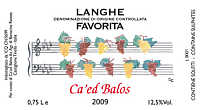
|
|
Langhe Favorita 2009 |
|
| Cà ed Balos (Piedmont, Italy) | |
| Grapes: Favorita | |
| Price: € 7.50 | Score: |
| This Langhe Favorita shows a pale straw yellow color and nuances of greenish yellow, very transparent. The nose reveals intense, clean and pleasing aromas which start with hints of pear, peach and hawthorn followed by aromas of plum, pineapple and broom. The mouth has good correspondence to the nose, a crisp attack and however balanced by alcohol, light body, intense flavors, pleasing effervescence. The finish is pretty persistent with flavors of pear, peach and apple. This Langhe Favorita ferments in tank. | |
| Food Match: Aperitifs, Vegetable appetizers, Dairy products, Eggs | |
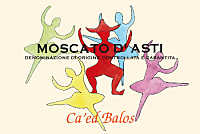
|
|
Moscato d'Asti 2009 |
|
| Cà ed Balos (Piedmont, Italy) | |
| Grapes: Muscat Blanc | |
| Price: € 9.00 | Score: |
| This Moscato d'Asti shows a brilliant greenish yellow color and nuances of greenish yellow, very transparent. The nose denotes intense, clean, pleasing and refined aromas which start with hints of grape, banana and peach followed by aromas of candied fruits, apple, pear, broom, citrus fruits, chamomile and sage. The mouth has good correspondence to the nose, a sweet and crisp attack, however balanced, light body, intense flavors, pleasing effervescence. The finish is persistent with flavors of grape, peach and banana. This Moscato d'Asti is produced in closed tank. | |
| Food Match: Cream desserts, Semifreddo, Panettone, Pandoro | |
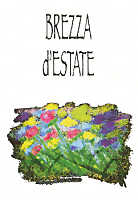
|
|
Colli Tortonesi Timorasso Brezza d'Estate 2008 |
|
| Cascina I Carpini (Piedmont, Italy) | |
| Grapes: Timorasso | |
| Price: € 30.00 | Score: |
| Colli Tortonesi Timorasso Brezza d'Estate shows a brilliant straw yellow color and nuances of greenish yellow, very transparent. The nose reveals intense, clean, pleasing and refined aromas which start with hints of apple, plum and hazelnut followed by aromas of citrus fruits, hawthorn, broom, mineral, peach and honey. The mouth has good correspondence to the nose, a crisp attack and however balanced by alcohol, good body, intense flavors, pleasing roundness. The finish is persistent with flavors of apple, hazelnut and citrus fruits. Colli Tortonesi Timorasso Brezza d'Estate ages in steel tanks and for at least 18 months in bottle. | |
| Food Match: Pasta and risotto with fish, Broiled fish, Mushroom soups, Broiled white meat | |
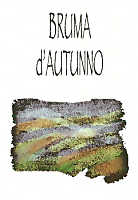
|
|
Colli Tortonesi Barbera Superiore Bruma d'Autunno 2005 |
|
| Cascina I Carpini (Piedmont, Italy) | |
| Grapes: Barbera | |
| Price: € 35.00 | Score: |
| Colli Tortonesi Barbera Superiore Bruma d'Autunno shows an intense ruby red color and nuances of garnet red, little transparency. The nose reveals intense, clean, pleasing and refined aromas which start with hints of cherry, plum and violet followed by aromas of raspberry, blackberry, vanilla, tobacco, chocolate, mace, leather and menthol. The mouth has good correspondence to the nose, a tannic attack and however balanced by alcohol, good body, intense flavors, pleasing crispness. The finish is persistent with flavors of cherry, plum and blackberry. Colli Tortonesi Barbera Superiore Bruma d'Autunno ages in cask for 14 months followed by at least 12 months of aging in bottle. | |
| Food Match: Roasted meat, Braised and stewed meat with mushrooms, Hard cheese | |
|
||||||||
|
DiWineTaste Polls
|
| |||||||
Privacy Policy | |||||||


| Copyright © 2002-2024 Antonello Biancalana, DiWineTaste - All rights reserved |
| All rights reserved under international copyright conventions. No part of this publication and of this WEB site may be
reproduced or utilized in any form or by any means, electronic or mechanical, without permission in writing from DiWineTaste. |